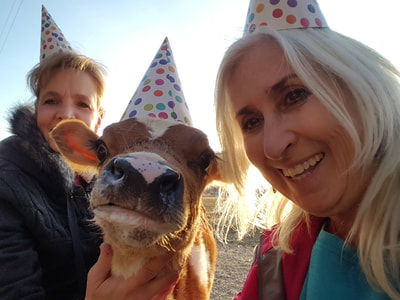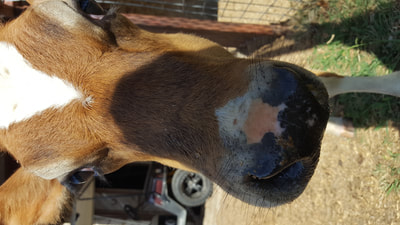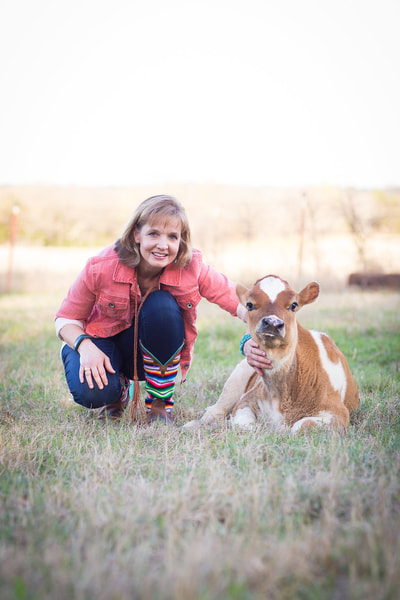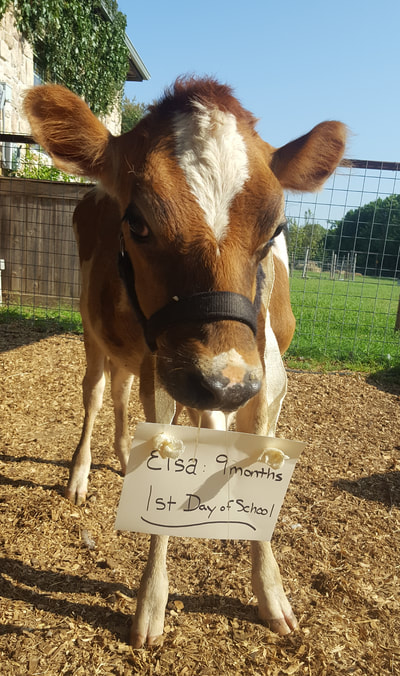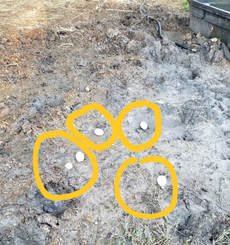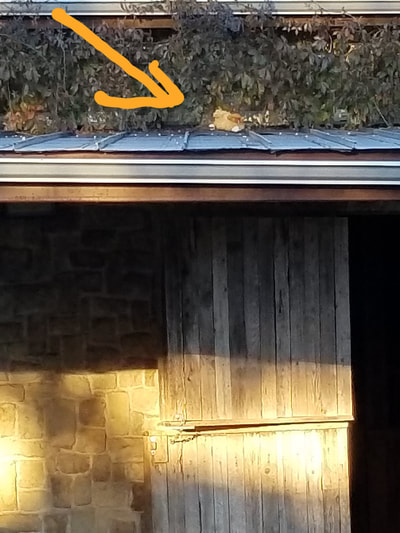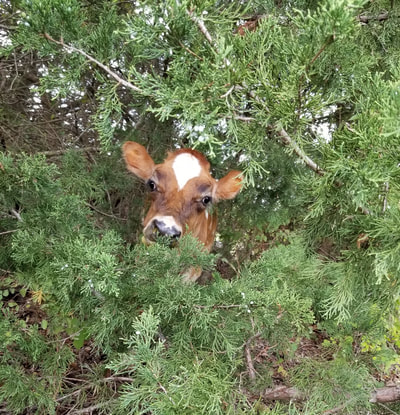
Welcome! You’ve found my first official blog post on the updated website! This has been a work in progress for the past several months, and…. not being exactly technically savvy (give me science or farming any other day!), I’ve had to call in some excellent tech help to assist in the upgrade. You can finally find ALL you need right here in one place!
The move to the new website put blogging on a little hiatus until we could get everything matched up properly. I think you’ll find this venue MUCH easier to navigate. Growing means learning, expanding, and exploring new options, right?
Speaking of growing…. She’s now 10 months old, and it’s well past time for an Elsa update! Sweet girl shows up on Facebook with some regularity, but I need to update here…. this is kind of her ‘baby book’ after all. For all my love of animals, I never thought I’d love a cow as much as I love this heifer. I guess that’s what might happen when one lives in your bathtub for a few weeks, and syringe feeding around the clock takes control of your life! The cards were certainly stacked against her. Birth during 20 degree weather (which cost her parts of both ears), failure to thrive (because she couldn’t suck properly), trips to the vet (because we didn’t know any better.. couldn’t see the internal cleft palate… and subsequently also missed by the vet)…. it did not look good for Elsa. If you scroll back thru my early 2018 posts, you’ll find her history scattered throughout.
Nonetheless, she prevailed.
Her story hasn’t been without a little work and some modifications in her/our life. Elsa is a permanent mascot on our farm. She is a greeter, social maven, photo bomber, and so much more. As she’s grown, we’ve adapted and risen to the challenge.
Her cleft palate is not easily repairable. According to a couple of vets I’ve consulted at Texas A&M Veterinary College, the surgery would not be easy on her. Cow mouths do not open very wide, and any repair of this nature would only be manageable by entering thru the side of her face…effectively eliminating the possibility of surgery unless absolutely necessary.
Elsa eats well (albeit messily!), and does not seem to be hindered much by her birth defect. Fairly early on, we discovered that she is also moderately tongue tied, and is only able to stick her tongue out of the right side of her mouth. This really doesn’t seem to affect her much, so I’m torn between getting it fixed surgically (rather, putting her thru that surgery), and just letting her carry on as she has been. She doesn’t know any differently, and so it seems more like the surgery would be for us moreso than for her.
Cleft palates in calves are not as rare as you’d think. Unfortunately, most calves are birthed fairly unattended, and if they go without nursing for long, they die. As in the case of Elsa, if the cleft palate is undetectable externally, the rancher usually assumes the calf simply died of natural causes. Cleft palate in calves is not a genetic anomaly…it’s caused by eating the wrong plant during the first trimester of pregnancy (a similar thing can happen in people if certain medications or products are consumed during the first trimester too). In Honey’s case (Elsa’s mama)….. she apparently got ahold of a select few plants in the lupine family….. the most common culprit for bovine cleft palates. Honestly, we’re blessed. Her deformity could have been much much worse, and her personality more than makes up for the bit of added work that is required for her health and safety.
Milestones
Just like all babies, Elsa has had her milestones.
- She survived the first month! It took a team of dedicated friends and ‘nannies’, as well as Charlie and I to get her thru the first month.
- Around the six weeks mark, she finally figured out how to eat properly from one teat…. the left front. Each teat is different on a cow, and Elsa had to figure out how. We never gave up, and every day, I would encourage her to try. After the mastered one teat, she gradually learned how to nurse (in her own way) on 2 other teats. Because of the angle and size (And probably because of her limited use of her tongue on the left side of her mouth) she never mastered the 4th teat on the back left quarter. As she grew, her nursing got pretty rough on Honey. She used her teeth more than most calves, and consequently, was really tearing her mama up. We made the difficult decision to wean her at 4 1/2 months (early!) because the damage she was doing prevented us from milking Honey too.
- Eating creep feed and grass is not a problem for Elsa. Occasionally, she will have grass coming out her nose and she will stamp her feet and blow until it comes out. For awhile, we had to wet her creep feed so that it wouldn’t end up in her nose. She has outgrown that need now, and eats food just like the big girls!
- Cud chewing…. all cows regurgitate their food and then thoughtfully re-chew it for better digest-ability. Elsa does this too, but the liquified food comes out her nose if her head is in a downward position. It doesn’t seem to bother her overly much, but it can get messy. Because of this, she gets a spongebath about once a week.
- Schooling. She is going to make an amazing hand milked dairy cow. She is calm, cool, and collected, AND she’s about as social as you could possibly imagine. Because the facial deformities are not genetic, we are not worried that the cleft palate will carry forward to her offspring.
Lessons from raising a Cleft Palate Calf
- Life is what you make of it.
- When you are able, make the most of running, bucking, and living like there’s no tomorrow…. but above all else, never ever give up!
- Resiliency is a good thing. Bounce forward not backwards!
- Vitamin D is a necessary part of healing. Lay in the sunshine even when you think you don’t have time to.
- Be friends with those who are different from you. (Elsa doesn’t know a stranger… 2 or 4 legged!)
- Work with what you’ve got! Not everyone is born with the same tools.
- Family doesn’t always mean blood relatives.
- Being ‘schooled’ is not a bad thing. We all need to be haltered and given parameters on occasion.
- Patience is still a virtue.
- Love IS worth it.
Stay tuned…. Elsa will always be making an appearance here. She’s one of us….. part of the ‘farmily’.
Thanks for visiting and celebrating our imperfectly perfect life on the farm.
Hugs and Love – Liz


